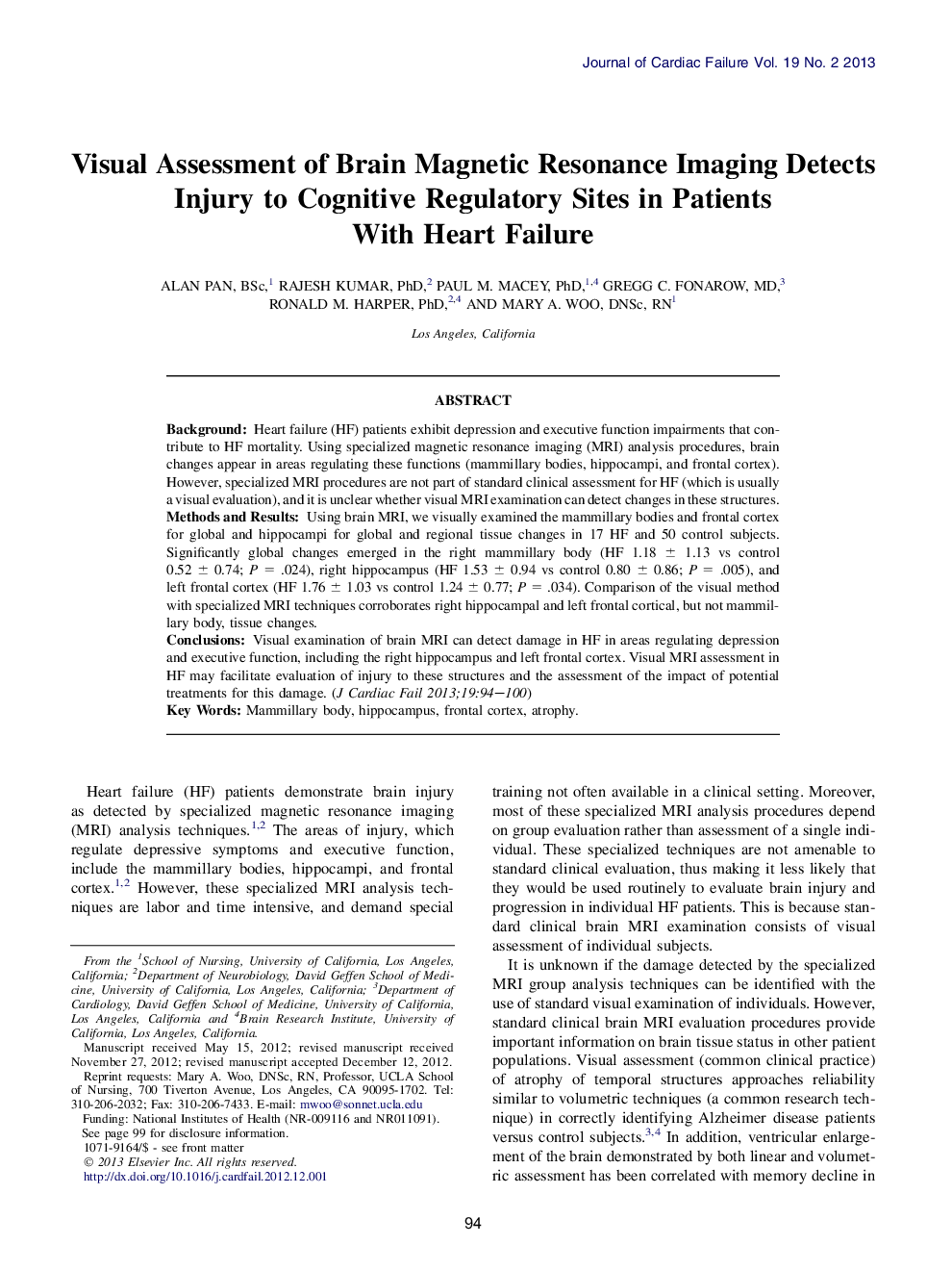| Article ID | Journal | Published Year | Pages | File Type |
|---|---|---|---|---|
| 2960226 | Journal of Cardiac Failure | 2013 | 7 Pages |
BackgroundHeart failure (HF) patients exhibit depression and executive function impairments that contribute to HF mortality. Using specialized magnetic resonance imaging (MRI) analysis procedures, brain changes appear in areas regulating these functions (mammillary bodies, hippocampi, and frontal cortex). However, specialized MRI procedures are not part of standard clinical assessment for HF (which is usually a visual evaluation), and it is unclear whether visual MRI examination can detect changes in these structures.Methods and ResultsUsing brain MRI, we visually examined the mammillary bodies and frontal cortex for global and hippocampi for global and regional tissue changes in 17 HF and 50 control subjects. Significantly global changes emerged in the right mammillary body (HF 1.18 ± 1.13 vs control 0.52 ± 0.74; P = .024), right hippocampus (HF 1.53 ± 0.94 vs control 0.80 ± 0.86; P = .005), and left frontal cortex (HF 1.76 ± 1.03 vs control 1.24 ± 0.77; P = .034). Comparison of the visual method with specialized MRI techniques corroborates right hippocampal and left frontal cortical, but not mammillary body, tissue changes.ConclusionsVisual examination of brain MRI can detect damage in HF in areas regulating depression and executive function, including the right hippocampus and left frontal cortex. Visual MRI assessment in HF may facilitate evaluation of injury to these structures and the assessment of the impact of potential treatments for this damage.
